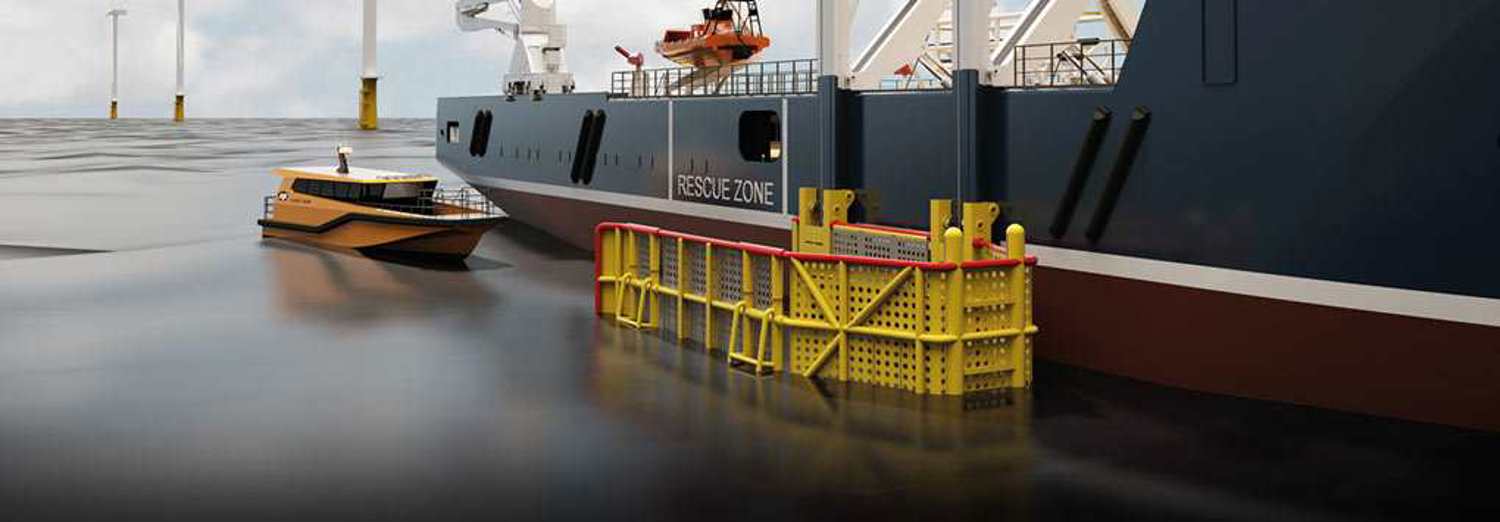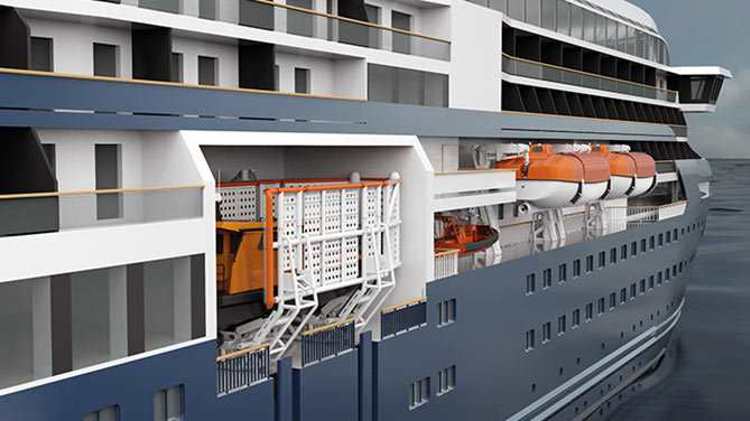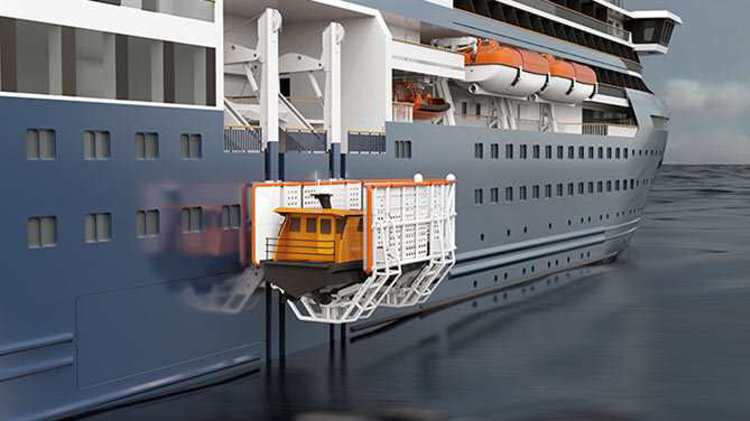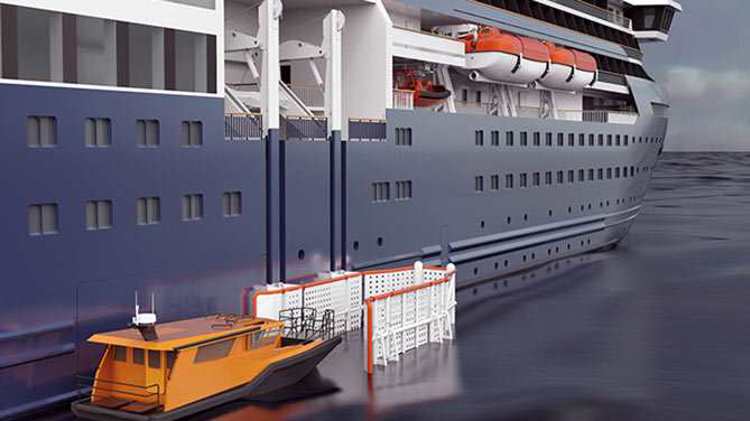
Boat Transfer System (BTS)
WINDS OF CHANGE
Our innovative new Boat Transfer System allows ‘daughter craft’ to be deployed from ships simply, quickly and safely – and all under full control.

Rapid development of remote offshore wind farms means turbine technicians are now stationed nearby for long spells on vessels, transferring with their equipment to turbines via walk-to-work gangways.
The Boat Transfer System (BTS) we have developed can extend the productivity of these vessels by deploying smaller craft to quickly take technicians to turbines in the same farm or adjacent fields, working in the same way as the fast crew transfer vessels used on installations closer to shore.
Spurring this development is the need to find a safer way of launching and recovering daughter craft, lifeboats and workboats, both for wind farms and other types of operation. BTS provides controlled launch and recovery, avoiding traditional problematic single-point lifts and control ropes involving crew intervention.
At its heart is the cradle that houses the boat. It is deployed using a single or dual handling unit and lifting winch. First, the handling unit transports it from the stowed position inboard to the vessel side, before the lifting winch then lowers it to below water level so the boat can be driven away. While the boat is afloat and in the cradle, the high perforated sides of the cradle restrain boat motions and dampen wave effects.
IN CONTROL

The whole bow profile and stern centring device, together with the hull dampening units, are shaped to fit the specific boat hull shape.
Detailed mathematical models have been created for both wind farm workboats and ships, and the performance of BTS verified in the Offshore Simulator Centre in Ålesund, with motions and interactions carefully analysed.
For recovery, the boat is driven in to the cradle, which is then lifted and the boat settles on resilient chocks, which are tailored to suit the boat; further lifting brings the cradle up to the point where it is moved inboard to the stowed position by the handling units. No intervention is needed from people on the boat, who can remain seated in both launch and recovery phases.
Martijn de Jongh, Chief Designer Ship Design and Systems, Kongsberg Maritime, says: “Both boat and cradle are fully controlled at all times since the cradle is controlled by the transfer system for the horizontal movement, and the lifting winch controls the load and speed in the vertical direction."
SIMPLE AND EFFECTIVE

“The cradle moves on vertical guides which finish above the waterline to avoid adding resistance, but the cradle continues to be fully guided until it is deep enough for the boat to float. This avoids the pendulum effects of single-point lifts, or the complication of dual lifts for larger boats, as well as hazards from swinging hooks, and trim effects from misplaced cargo.”
Depending on the configuration of the boat and the location of the BTS, personnel can go on board from a platform at the side of the BTS stowed position, at ship deck level, or over the bow direct from a reception area in the ship’s superstructure. Once on board, the only person who needs to do anything is the helmsman who drives the boat out of, or into, the cradle.
Three versions are currently available. The largest is for workboats up to 20 tonnes with a maximum breadth of 4.9m, while the medium covers boats up to 10 tonnes loaded, with a beam limit of 3.8m. The smallest is a 3.5 tonne version for handling smaller ribs and inflatables.
If a ship with BTS has to rescue survivors in the water or in lifeboats, a ‘trampoline’ net can be rigged across the cradle on which people can transfer. The cradle is held at a suitable level to match the net height, and then raised to the ship’s deck.
Services et support
-
24/7 Technical support
Our 24/7 technical support team is there to help at any time, day or night, wherever your vessel is.
-
Conversions, retrofit and refit
We understand the importance of having the right parts, available in the right place, at the right time.
-
Training
Ensure that your crew is properly and thoroughly trained. This will reduce operational risk, downtime and maximise return on asset investment.